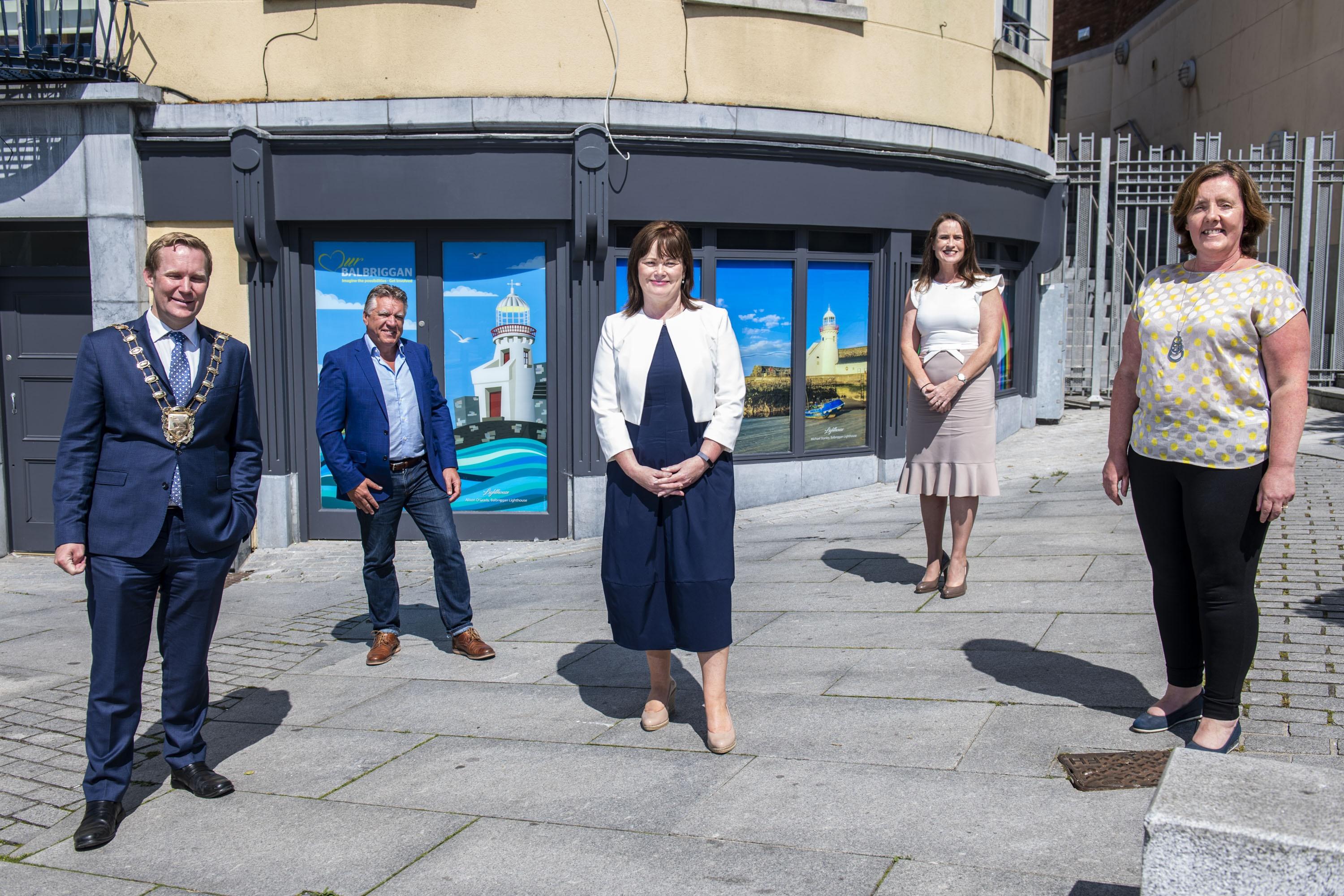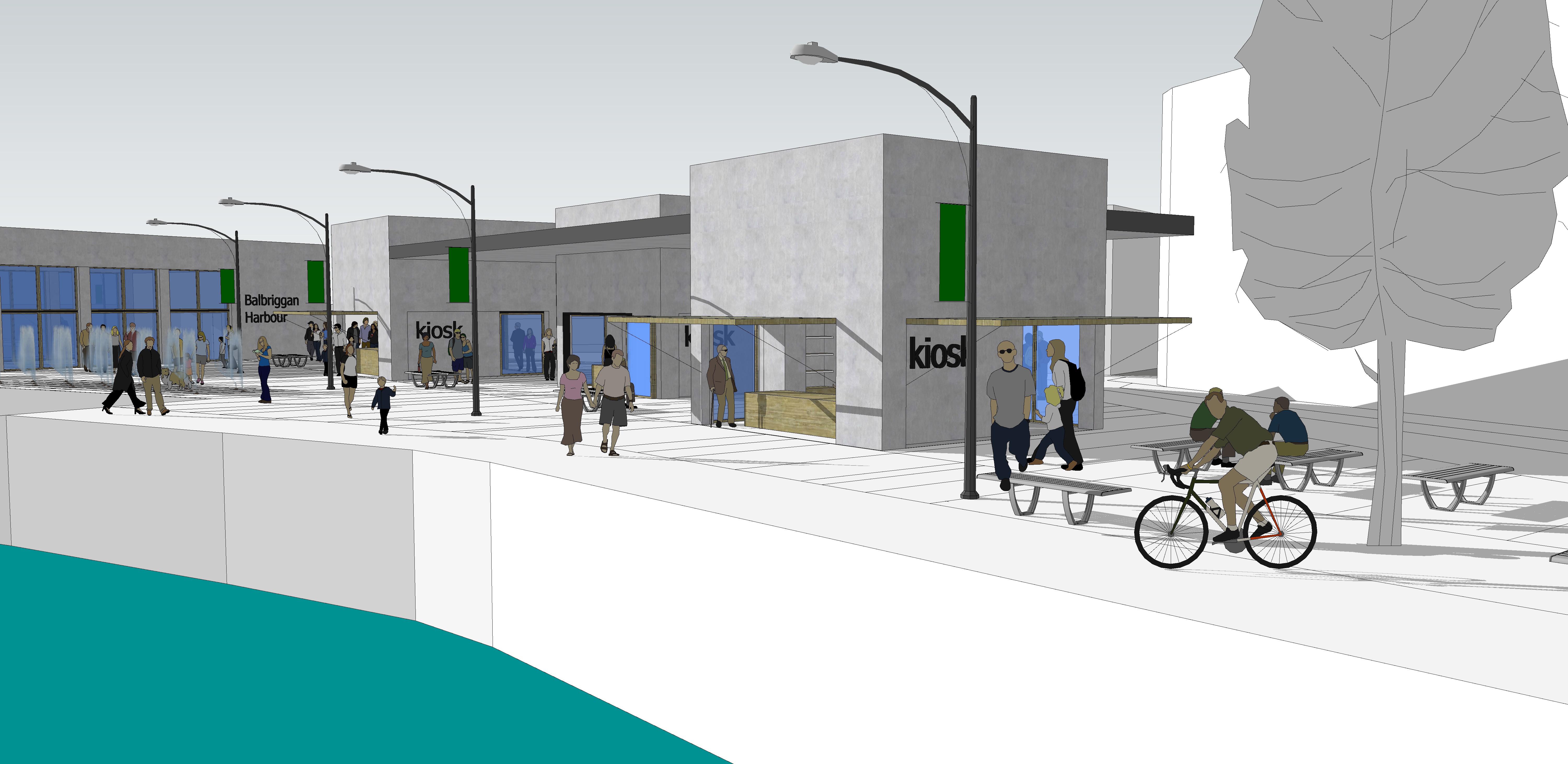Substantial progress made after first year of €30m Our Balbriggan
A year on from the launch of the Our Balbriggan Rejuvenation Plan, the transformation of Ireland’s youngest town is taking shape, with substantial progress announced across a range of objectives.

An initial programme of 20 things in 12 months has been largely achieved, even with the current restrictions, and Fingal County Council has restated its commitment to the delivery of the objectives of the €30m plan.
Within the next year it is anticipated that a landmark nightclub building will be demolished at Balbriggan Harbour, and plans have been revealed to transform the harbour area into a vibrant recreational amenity.
This week, every resident will receive an update on the progress, allied to the opening of an Our Balbriggan Hub in the town centre, which will be the engine room of the rejuvenation scheme and a constant link between the plan and the people of Balbriggan.

Balbriggan has also been chosen as Ireland’s first town to be named as a Smart District in a move that will put it at the cutting edge of smart projects to improve services, create jobs and build a better community.
The ambitious vision contained in the Balbriggan Rejuvenation Plan 2019-2025 was the result of an historic community engagement which saw over 25% of residents outline their preferences for the future of our town.
From a menu of potential improvements, transforming the Main Street and connecting it to a reimagined Harbour area were the top choices across all age groups in a survey which will become a model for towns around the country.
Significant investment has been made to date, with two new playgrounds, a skate park and an extensive refurbishment of Balbriggan Library, and the repurposing of a vacant shopfront as the Our Balbriggan Hub, signalling the initial physical improvements.
The Council has purchased a building at 2-4 Dublin Street to develop into a creative arts and digital space, strengthening the public and civic quarter of the town and is close to completing the acquisition of two key buildings on Main Street and the harbour which are integral to this plan.
Plans are at an advanced stage to develop the heart of the town’s urban core, opening up a green corridor along the River Bracken, creating a new street edge and park entrance on Bridge Street, sweeping down to a transformed Quay Street and flowing into the Viaduct area to a re-imagined Harbour.
The Greenway will link with a coastal promenade boardwalk connecting the north of the town and Bremore Regional Amenity Park and Bremore Castle to Ardgillan Castle and further on to Skerries joining a Fingal Coastal way.
The Railway Street improvement scheme will provide better flow and connectivity to the town’s most valued asset, its beach, which stands just metres from Balbriggan Railway Station.
“A huge section of the community got involved to imagine the possibilities and provide a strong set of priorities which will realise Balbriggan’s full potential,” said Professor Brian MacCraith, Chair of the Balbriggan Leadership Group.
“The Our Balbriggan initiative is about creating an ambitious and prosperous future for Balbriggan that builds on all of its strong points – the physical assets, its fabulous beach, its location and its diverse and rapidly-growing talent base.
“Our journey so far has been one of engagement, ambition, creativity and intent – and, thanks to the people of Balbriggan, the transformation of the town has already begun.”
Once completed, Balbriggan Harbour will be transformed into a vibrant recreational and community amenity, complete with kiosks and buildings and giving more of the public realm back to the public for their enjoyment and use.
This high standard amenity space for the enjoyment of citizens and visitors will be linked to the rejuvenated Quay Street and beach.
This reimagined harbour will cement the identity of Balbriggan as a destination coastal town and tourist attraction at the heart of the new Fingal Coastal Way cycle paths stretching along the Dublin Coastline to Meath.
“There is no one big thing that will change Balbriggan – the town will be transformed by many actions, completed by many stakeholders working together over a period of years,” said AnneMarie Farrelly, Chief Executive of Fingal County Council.
“The Council is committed to seeing this plan through and I am confident that Balbriggan will become widely known as a fantastic place to live, work and do business.”
Designed as a multi-disciplinary space, the Our Balbriggan hub will accommodate small gatherings and focus on developing new networks in areas identified in the plan, such as young people, diversity and integration, employment and education, social enterprise and entrepreneurship, tourism and craft. Its large windows and interior wall space will be devoted to showcasing local creative output, connecting the people of the area to their emerging and established talent.
The hub will also serve as a focus point for activities under the Smart Balbriggan District and the EU’s URBACT iPlace programmes, both of which will enhance the future of Ireland’s youngest town.
Smart Districts, under the Smart Dublin programme, are strategically selected geographical locations where targeted smart city projects are implemented.
The core focus of the Balbriggan Smart District will be to enhance community life, support economic opportunities and drive innovation through a number of smart district projects.
Underpinned by the Our Balbriggan free public wi-fi, Smart Balbriggan projects will include the creation of an innovation hub, maker space and Internet of Things living lab.
Balbriggan is also part of the EU’s iPlace initiative which brings together nine places with similar issues to focus on identifying and strengthening local economic development opportunities through plans such as Our Balbriggan and consolidates Ireland’s ties with Europe.
As part of the EU’s Urbact programme, iPlace members exchange learning and experiences in dealing with their respective challenges to find niches for sustainable local economic development.
The city of Amarante in Portugal is leading the iPlace Project, which also includes Gabrovo (Bulgaria), Grosseto (Italy), Heerlen (Netherlands), Kočevje (Slovenia), Medina del Campo (Spain), Pärnu (Estonia), Pori (Finland) and Saldus (Latvia).